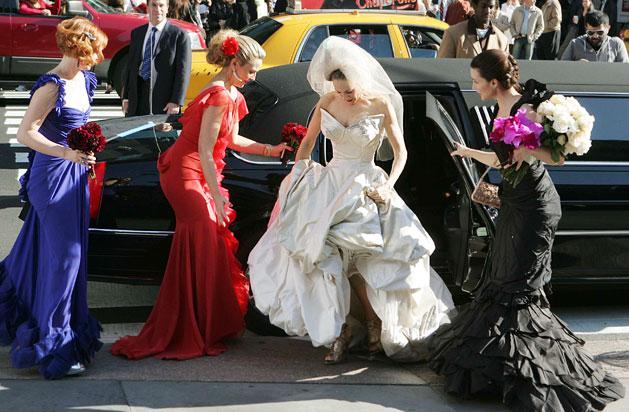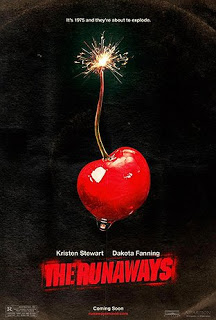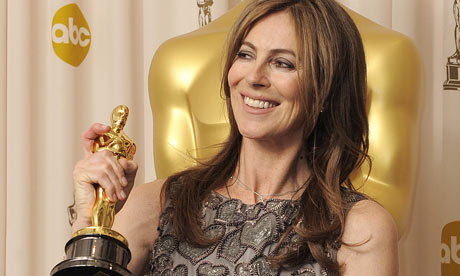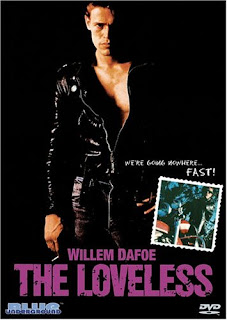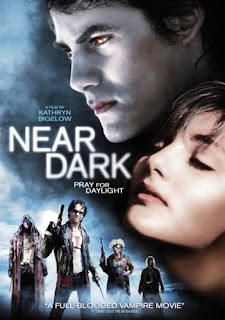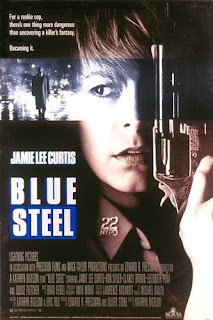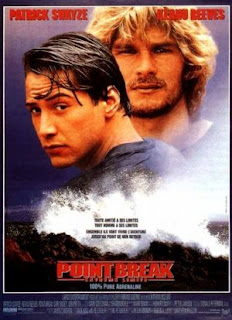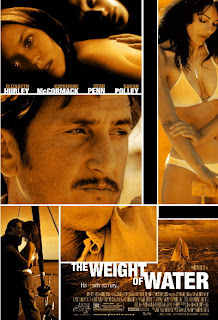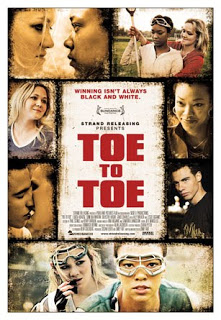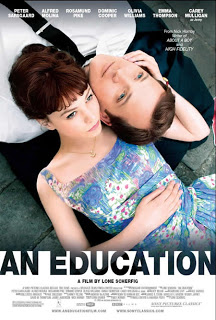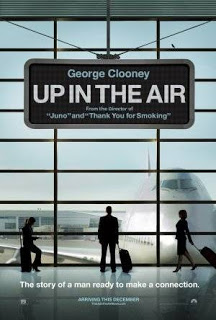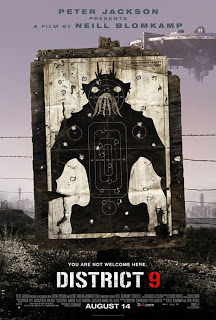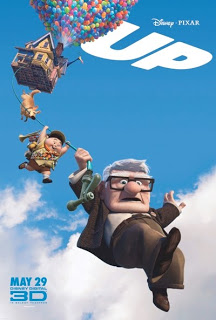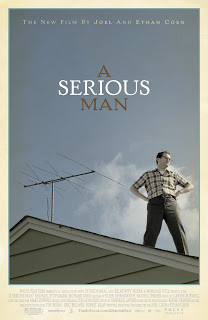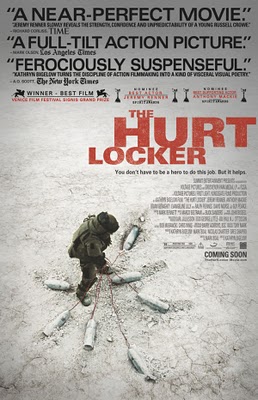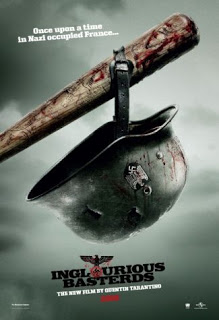I’ll be the first to admit: I want to like
District 9, and I want to applaud The Academy for nominating this quirky, dark, heartfelt, and comic film for a Best Picture award. Even further, I would like to label
District 9 a complex, multi-layered science-fiction movie that explores the intersection of race, politics, multi-national corporations, biotechnology, and the dark world of illegal weapons trade. Certainly, it seems this movie promises to be one of Big Ideas.
District 9, directed by Neill Blomkamp, depicts a futuristic Johannesburg, South Africa, nearly two decades after a massive alien spacecraft grinds to a halt in the sky, hovering silently just above the cityscape. The malnourished, bipedal, crustacean-like aliens, given the derogatory nickname “prawns,” now live in a militarized refugee camp, aptly named District 9 and policed by the South African government. However, crime, weapon trade, and even interspecies prostitution have overrun this filthy alien shantytown, and soon Multi-National United (MNU), a private company, is contracted to relocate the prawns to a more easily patrolled area, one much farther from the city limits. Enter Wikus van der Merwe (Sharlto Copley), a middle-management Yes-Man put in charge by MNU head (coincidentally, also his father-in-law) to lead the evacuation and relocation of these creatures. (His primary job is, hilariously, to go door-to-door, politely asking the prawns to sign an eviction notice while MNU mercenaries with machine guns look on. How bureaucratic!)
However, after a karmatic run-in with some dark, oozy liquid from an alien weapon he confiscates, Wikus contracts a particularly nasty virus, the main symptoms which turn humans into prawns. The film follows Wikus on his pursuit to find a cure for his disease, which entails working closely with Christopher Johnson (Jason Cope), an intelligent and sensitive prawn, to relocate the confiscated liquid; evade the MNU folks, including his evil-doer father-in-law, who are trying to kill him for his unique DNA; and heal his broken relationship with his wife, who believes, according to the lies of her father, that Wikus has slept with an alien. Cue Bill Clinton: “I did not have sexual relations with that woman!”
Science fiction is often a useful allegorical genre that allows filmmakers to discuss socially and politically charged issues in a way that is palatable to average moviegoer. Take Minority Report, for example, or The Matrix, or the film-adaptation of Orwell’s novel 1984. District 9 attempts to borrow from this rich tradition, and it’s nearly impossible to critique this film without pointing to the overt, sometimes too obvious, racial commentary that serves as the backbone of the plot. District 9 is, after all, set in South Africa, the geographical epicenter of Apartheid. However, to the BitchFlicker who turns to this movie looking for deep political or social commentary, I say this: Don’t waste too much time looking. While the film seems to want to reveal a reverse racism, one where the historical victims (South Africans) become the villains, propagating against the prawns the same violent and discriminatory acts that were once committed upon their own people, in the end the movie either: a.) substitutes gunfire, gore, or special effects at any moment the movie veers too far from the surface, b.) relegates Big Ideas to Small Peanuts by reducing the plight of the prawns to the pursuit of Wikus’s happiness, or c.) reinforces the very racist notions that it wishes to resist (see representation of Nigerian gangsters.)
If you’ve seen the Lord of the Rings trilogy, you’re aware that Peter Jackson is the master of the Buddy Film genre. It should come as no surprise, then, that Jackson, the producer of District 9, brings us yet another masculine-charged cinematic world, full of gore, gun fights, chase scenes, buddy bonding (even if interspecies), and special effects, but a world also nearly void of female characters.
District 9 operates with what I’d call an absent feminism, which isn’t quite an anti-feminism but a disregard for a female world altogether—except when a minor feminine presence functions as off-stage impetus for the lead character. Aside from a few bit parts, the most prominent female role is that of Wikus’s wife, Tania (Vanessa Haywood), who, although rarely seen onscreen, becomes the driving motivation for Wikus to risk his life to find the cure for his “prawnness,” befriending, out of necessity, Christopher Johnson, the same alien he tried to evict earlier in the day. (Wikus didn’t know then that Johnson actually built his shack atop the Mothership’s missing module; he’s been diligently working for twenty years to fix it, and was nearly finished when pesky Wikus confiscated that black fluid.)
Wikus’s wife, who is given no real identity, save the fact that she is torn between the age-old allegiance to her father and loyalty to her husband (implying that she most certainly “belongs” to one or the other), won’t relinquish hope of her husband’s return by the film’s conclusion. Someone is leaving strange gifts on her doorstep, gifts oddly similar to the ones dear hubby Wikus used to give her. Blomkamp insinuates that she’s a steadfast wife who will do her wifely duty and wait faithfully for her disappeared husband. The viewer is given no back-story or insights into their relationship; yet, forced upon us is the heavy-handed notion that they really do love each other—like, in that super-deep, eternal-love kind of way. Their story, of course, is a bottom-tiered thread in the narrative.
The final scene contains the most sentimental gesture of the film; Blomkamp depicts a now full-prawn Wikus sculpting a rose from a heap of scrap metal. Ah—a delicate rose amidst the muck and hopelessness of an alien nation. Perhaps most disturbing is the emotional weight Blomkamp wants this scene to carry: Poor Wikus! Now he’s the other race, er, I mean species! Will that Christopher Johnson ever return with the magical cure for Prawness, as he promised?
Poor Wikus? What about the entire prawn nation, displaced noncitizens forced to live in the squalor of regulated militarized zones? What about the fate of millions of other prawns with more troubling stories (such as genocide, for one) than a nebbishy Yes-Man turned courageous No-Man turned Prawn? But, like, he’ll really, really miss his wife! And, like, they can’t be together if he’s a prawn, now can they? But Look! He makes her flowers out of trash! How sweet!
Perhaps Blomkamp’s vision is to convey the notion that our greatest hope for an internationally practiced humanism is to fully experience the isolation and desperation at the individual level. I want to believe that this is his message. But I fear I may be giving him too much credit, for in the end Blomkamp never fully considers the implications of violent discrimination and segregation on anyone but (white, male) Wikus, the original perpetrator of this alien apartheid in the first place. In the end, Wikus becomes a victim, too, yes. However his victimhood is meant to be understood as a courageous act of martyrdom, and, more specifically, one of choice. After all, Wikus told Christopher Johnson to board the Mothership without him; Wikus would stay behind to fight the bad guys. If nothing else, Wikus was given the luxury of choice and self-determination, a luxury not afforded to the “others” of this film, woman and prawn alike.
I want to like District 9—I really do. And I will admit to enjoying the film on a simple story level. There’s plenty to admire, including the visual grittiness, the quickness of the pace, moments of dark humor, and the cool special effects, if you’re into that kind of thing. The script is original, too, and examines the “Man vs. Alien” genre in a new and interesting light, asking the pointed question: What the heck would we do with millions of immigrant aliens if they ever came to Earth?
However, I couldn’t help but think there was a certain dishonesty about the movie, too. Instead of using science fiction to serve the purpose of political allegory, District 9 uses political allegory as a Trojan horse—supplanting an action-packed buddy movie in the place of a film that initially promises the viewer something much more substantive.
While I don’t think this film will win the Oscar for Best Picture, I certainly don’t think it’s the worst film ever nominated. If nothing else, District 9 does generate discussion about some often taboo topics, even if the film itself doesn’t provide any satisfying answers.

